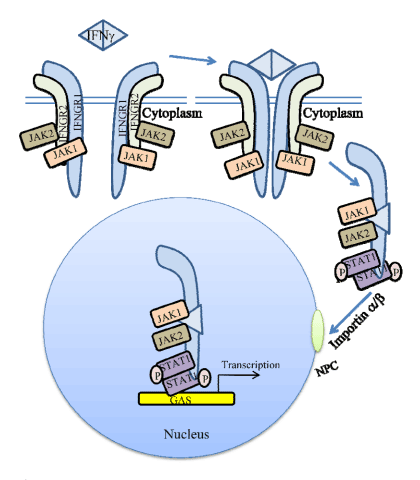
 |
| Figure 2: An alternate model of IFNγ signaling. IFNγ binds to IFNGR receptor complex, which results in endocytosis of IFNGR1 with IFNγ shift of binding from IFNGR1 extracellular domain to intracellular domain. This results in movement of JAK2 from IFNGR2 to IFNGR1 (because of higher binding affinity) where JAK1 and JAK2 become activated, phosphorylate IFNGR1 cytoplasmic domain with enhanced binding and activation of STAT1α. The complex of IFNγ/ IFNGR1/ JAK1/ JAK2/ STAT1α couples to importin α (IMPα) via the C terminus of IFNγ, which in turn results in IMPβ binding to IMPα for active transport of the complex into the nucleus to promoters and to chromatin histones that are associated with the region of specific gene activation by IFNγ. The nuclear JAKs are involved in phosphorylation of histone H3 at tyrosine 41, which is associated with heterochromatin destabilization that leads to gene exposure to the transcription complex. More details are presented in refs. 6, 29, 37, 38. |